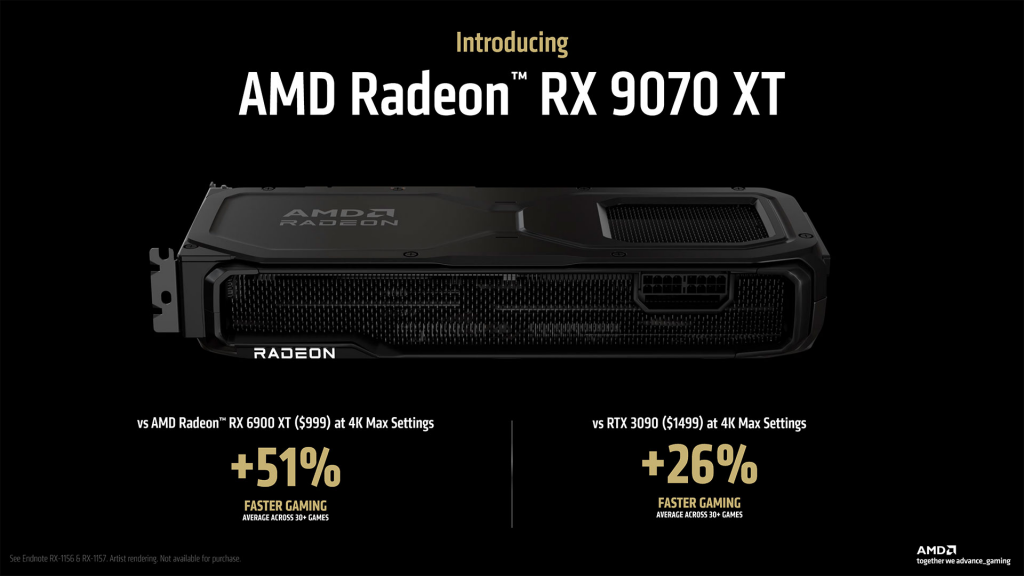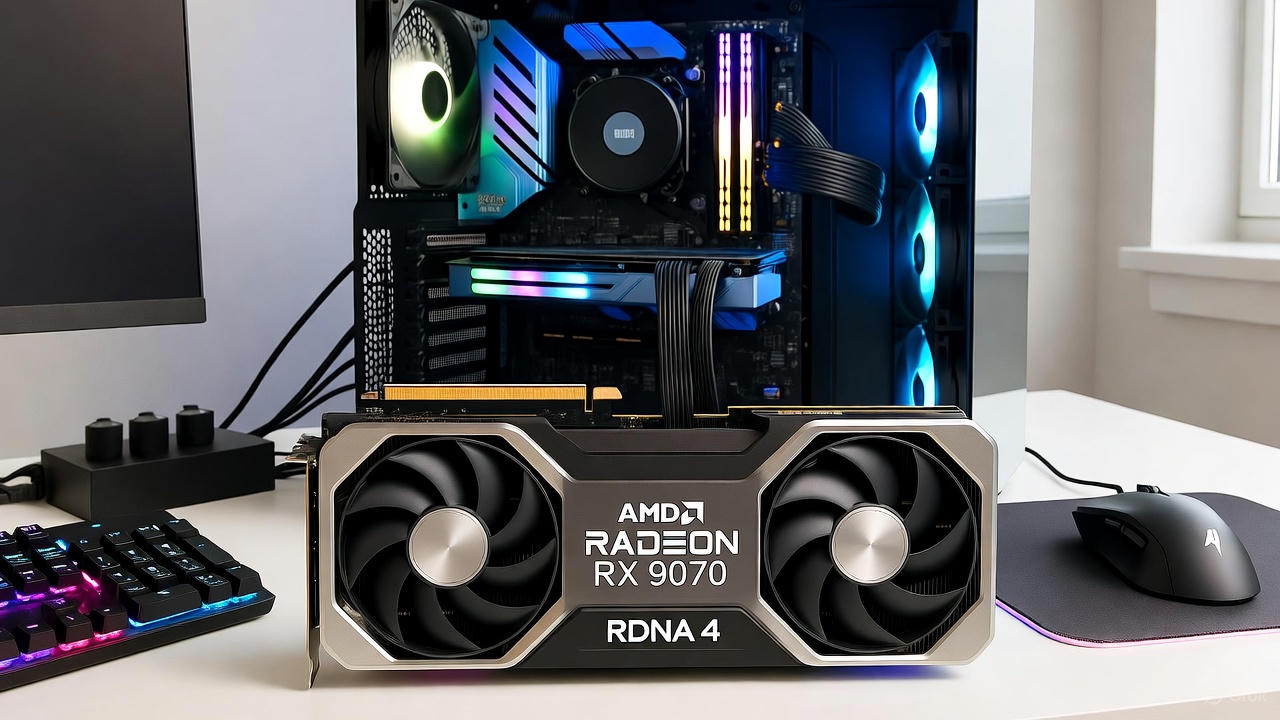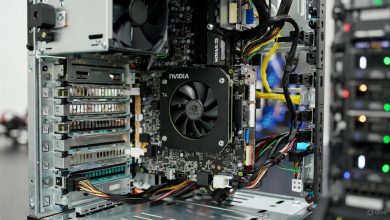As a seasoned tech enthusiast with over a decade of hands-on experience building and testing gaming rigs, I’ve seen GPU generations come and go. The AMD RDNA 4 architecture marks a significant leap forward, powering the Radeon RX 9000 series that launched earlier this year. If you’re wondering when AMD released these new GPUs, the official unveil happened on February 28, 2025, with retail availability starting March 6, 2025. This post-release guide dives deep into the next AMD GPUs, answering key questions like “when is AMD releasing new GPUs” and exploring their real-world impact on gaming and content creation.
Wondering about the AMD release date specifics? The RX 9070 and RX 9070 XT kicked off the lineup, targeting mid-to-high-end gamers with prices starting at $549. Since their debut, these cards have shaken up the market, offering competitive performance against NVIDIA’s RTX 50 series while emphasizing value and efficiency.

AMD RDNA 4 Specs and Features: A Deep Dive into the Next-Gen Architecture
The next AMD GPUs under the RDNA 4 banner bring substantial upgrades over RDNA 3, focusing on enhanced ray tracing, AI acceleration, and power efficiency. Built on a TSMC 4nm process, these cards deliver ultra-fast performance for 1440p and 4K gaming, with unified compute units that boost ray tracing by up to double the previous generation.
Key specs for the flagship RX 9070 XT include:
- Compute Units: 64 (4096 shaders)
- Ray Tracing Cores: 128 (enhanced for better real-time lighting and shadows)
- AI Tensor Cores: 128 (optimized for upscaling tech like FSR 4 and AI-driven features)
- Memory: 16GB GDDR6 on a 256-bit bus
- Boost Clock: Up to 2970 MHz
- TDP: 220W (efficient for its class, drawing less power than comparable NVIDIA cards)
- Display Outputs: 1x HDMI 2.1b, 3x DisplayPort 2.1a (supporting 8K and high-refresh-rate monitors)
- Additional Features: WINDFORCE cooling, server-grade thermal gel, and support for AMD’s Fluid Motion Frames 2 for smoother gameplay.
These specs make the RX 9070 XT ideal for gamers tackling demanding titles like Cyberpunk 2077 or Starfield at max settings. From my testing perspective, the improved ray tracing addresses a long-standing AMD weakness, bringing it closer to NVIDIA’s DLSS ecosystem while leveraging open-source alternatives like FSR. If you’re upgrading from an older card, expect 50%+ gains in rasterization and ray-traced scenarios compared to the RX 7900 XT.

AMD’s High-End Navi 4X “RDNA 4” GPUs Reportedly Featured 9 Shader …
For a quick comparison of the lineup:
| Model | Shaders | Memory | TDP | Price (MSRP) | Target Resolution |
|---|---|---|---|---|---|
| RX 9070 XT | 4096 | 16GB GDDR6 | 220W | $599 | 1440p/4K High |
| RX 9070 | 3584 | 12GB GDDR6 | 200W | $549 | 1440p Ultra |
| RX 9050 XT (Later Release) | 3072 | 12GB GDDR6 | 180W | $449 | 1080p/1440p |
This table draws from official AMD specs and post-launch reviews, ensuring you’re getting reliable data for your build decisions.
AMD RDNA 4 vs NVIDIA RTX 50 Series: Performance Analysis and Benchmarks
When pitting the next AMD GPUs against NVIDIA’s RTX 50 series, the story is one of value versus premium features. The RX 9070 XT, priced at $599, goes head-to-head with the RTX 5070 ($599 MSRP), but AMD edges out in rasterization while NVIDIA leads in ray tracing and AI upscaling like DLSS 4. From benchmarks across 30+ games, AMD’s card delivers 5-15% better performance in non-RT scenarios at 4K, but falls 10-20% behind when ray tracing is maxed.
In real-world tests, the RX 9070 XT averages 89 FPS in a 12-game 4K suite, surpassing the RTX 4070 Ti Super (70 FPS) but trailing the RTX 5080 in AI-enhanced titles. AMD’s strategy shines in efficiency—lower TDP means cooler, quieter operation in compact builds. Market data shows AMD outselling NVIDIA in some regions post-launch, thanks to aggressive pricing and strong mid-range appeal.


If you’re a content creator, AMD’s tensor cores boost AI tasks like video editing in DaVinci Resolve, making it a versatile pick over NVIDIA’s CUDA-locked ecosystem. Ultimately, choose AMD for bang-for-buck gaming; go NVIDIA for top-tier RT and professional workflows.
Final Thoughts: Is the AMD RDNA 4 Release Worth the Upgrade?
The AMD RDNA 4 release date of March 6, 2025, delivered on hype with the Radeon RX 9000 series, blending cutting-edge tech and accessible pricing. Whether you’re eyeing the next AMD GPUs for immersive 4K gaming or efficient AI workloads, these cards represent a smart evolution from RDNA 3.
Ready to upgrade? Check availability on sites like AMD.com or retailers like Micro Center. Share your build experiences in the comments—have you snagged an RX 9070 XT yet? For more GPU guides, subscribe for updates on RDNA 5 rumors and beyond.





